Low-Oxalate-Friendly Veggies: Is Kale High in Oxalate?
Primal Edge Health participates in the Amazon Services LLC Associates Program and other affiliate programs and therefore, may collect a share of sales or other compensation from the links on this page. This comes at no additional cost to you, and all the prices and availability are accurate at the time of publishing.
“Is kale high in oxalate?” This is often the question many people have after the emergence of “anti-nutrients” as a concept, particularly the high oxalate content of many known health foods.
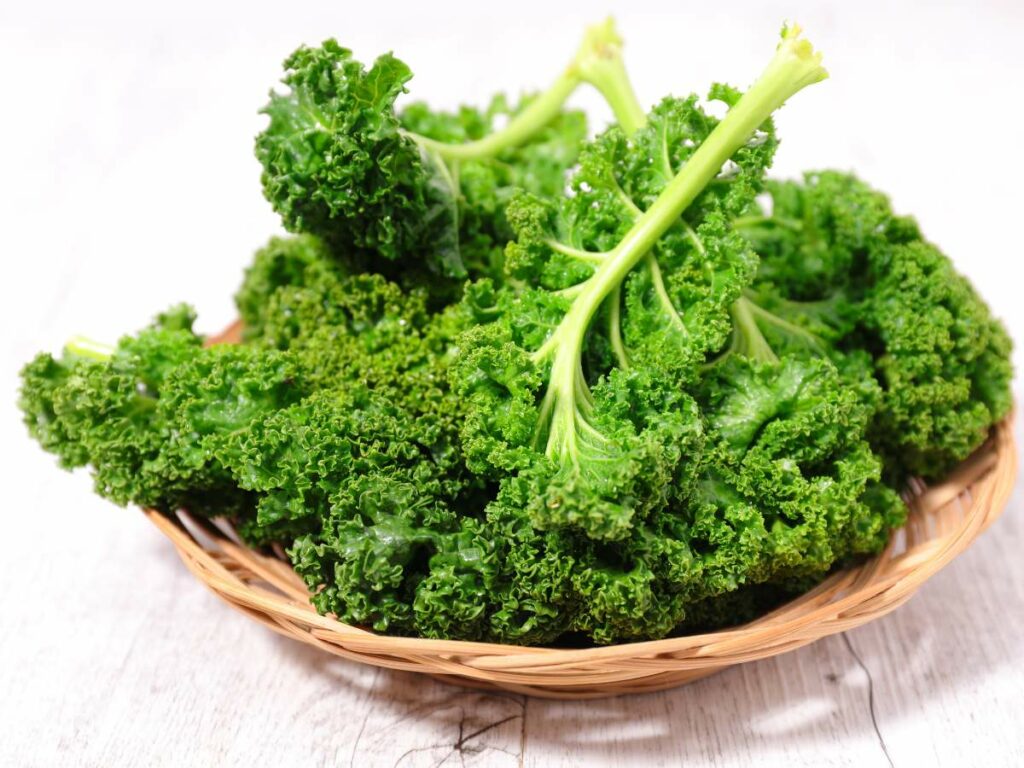
I used to think spinach was the holy grail of leafy greens, but then I found it’s packed with hundreds of milligrams of oxalate per serving. Naturally, it got me thinking about other foods that could be hiding high levels of oxalates.
Kale seems like a superfood in all aspects, rich in fiber, antioxidants, vitamins, and calcium—but what about its oxalate content? Let’s explore.
Table of Contents (click to view)
What is Oxalate and Why Does it Matter?
It’s been a few years since I started my low-oxalate diet, which came naturally to me, having been a carnivore for a better part of a decade. Meat contains very little to no oxalates. In contrast, many plant foods have moderate to high levels of oxalate content.
But what is oxalate, anyway? And why should it matter?
Oxalates (oxalic acid) are organic acids found in fruits, vegetables, grains, and nuts in varying amounts. When we consume foods containing oxalates, they go through the kidneys and exit the body through urine. Oxalates can also bind to calcium in the intestines and leave the body through stool.
According to the American Journal of Physiology, the amount of oxalate secreted through the urine can contribute to the formation of calcium oxalate stones, which are the most common form of kidney stones. Having too little urine or too many waste products in the urine can cause these waste products to crystallize and form stones.
So, does this mean eating a lot of oxalate-rich foods will make you develop kidney stones? Not necessarily.
Drs. Finkielstein and Goldfarb of the Canadian Medical Association Journal (CMAJ) state that approximately 10% of people will experience nephrolithiasis (kidney stone formation) in their lifetime, and 80% of them will have calcium oxalate stones. They conclude that, yes, too much oxalate can contribute to the risk of kidney stones, but the risk is significantly higher for people with 1) a history of kidney stones, 2) a low-calcium diet, 3) diabetes, and 4) obesity.
If you have any of these risk factors, your doctor may recommend a low-oxalate diet to reduce your chances of developing calcium oxalate stones. Even if you are not part of any at-risk groups, you might want to talk to your doctor anyway as a precaution.
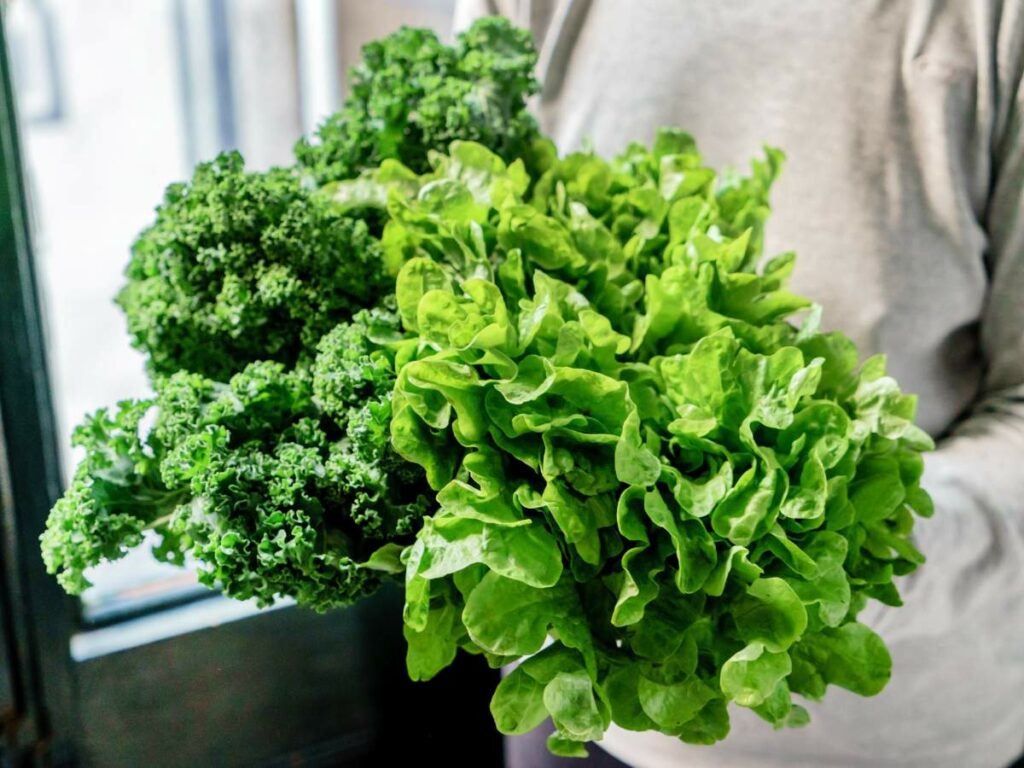
What is the Low-Oxalate Diet and Its Benefits?
The low oxalate diet is an elimination diet that reduces or eliminates the intake of foods with moderate to high oxalate content, primarily plant sources. The main goal is to reduce the amount of oxalates in the urine, which, in turn, can help prevent calcium oxalate kidney stones.
A 2021 study published in the Journal of Endourology states that minimizing the intake of dietary oxalate can help reduce the prevalence of kidney stones in the United States. To put it simply, the mechanism goes like this: If there is too little oxalate intake, there will be no urine supersaturation. If there’s no urine supersaturation, there will be no crystallization of waste products.
Furthermore, the study cites that reducing dietary oxalate can help prevent end-stage kidney disease for people with underlying chronic kidney disease. The researchers also found that people who did “juicing” (drinking high-oxalate fruits and vegetables in the form of blended juices or green smoothies) had higher rates of oxalate nephropathy.
Is Kale High in Oxalate?
Many people who follow or want to follow the low-oxalate diet are skeptical of kale because of its similarities with spinach, which is known to have higher levels of oxalates than other plant-based foods. In fact, scientists from the Agricultural Research Service (ARS) analyzed 310 spinach varieties and found oxalate contents ranging from 647.2 to 1,286.9 milligrams per 100 grams serving of raw spinach.
To put these numbers into perspective, most healthcare providers recommend eating only 40 to 50 mg oxalate daily. Recommendations vary, but it’s easy to see that a single serving of spinach is almost double that daily allowance.
The good news is that kale is not high in oxalate. Quite the contrary, really, as the UCI Kidney Stone Center classifies kale as “very low” in oxalates with only two milligrams per cup of chopped kale. Phew!
Even better news, a lot of green veggies have low oxalate levels. If you want to diversify your diet even further, consider other low-oxalate vegetables like broccoli, Brussels sprouts, and cabbage, as well as low-oxalate leafy greens like mustard greens and lettuce.
What Are The Potential Benefits of Eating Kale?
Now that you know for sure you can keep kale while on a low-oxalate diet, let’s go a bit deeper as to why you should eat it regularly, apart from its low oxalate content. Here are the potential benefits of kale you should know about:
- Antioxidants: Kale is a bountiful source of antioxidants, including beta-carotene, tocopherol, and ascorbic acid), that help protect your cells from free radicals and other illnesses.
- Vitamins: Eating more kale is a great way to load up on fat-soluble vitamins (Vitamin A, D, E, K) and water-soluble vitamins (Vitamin C, Vitamin B complex, etc.) for better overall health and immunity.
- Calcium absorption: A study on calcium absorption from kale showed that kale exhibited excellent calcium bioavailability and absorbability among test subjects. The CMAJ study suggested consuming enough calcium so that it binds to oxalate in the intestine, preventing oxalates from ending up in the urine.
- Fiber: Kale is also a great source of dietary fiber with 4.1 grams for every 100 grams, which can help with better blood sugar control, weight management, and bowel movements.
- Nutraceuticals: Researchers studying the health benefits of kale cite its abundance of nutraceuticals, compounds that help prevent and treat chronic diseases. Aside from kale’s antioxidant properties, it also exhibits anti-carcinogenic effects and protective functions on the cardiovascular and gastrointestinal systems.
Aside from these nutritional benefits, kale is also a versatile ingredient. You can use it in a cheesy casserole, micronutrient-rich crackers, and more. Browse my blog for more nutrient-dense recipes featuring kale and other leafy greens.
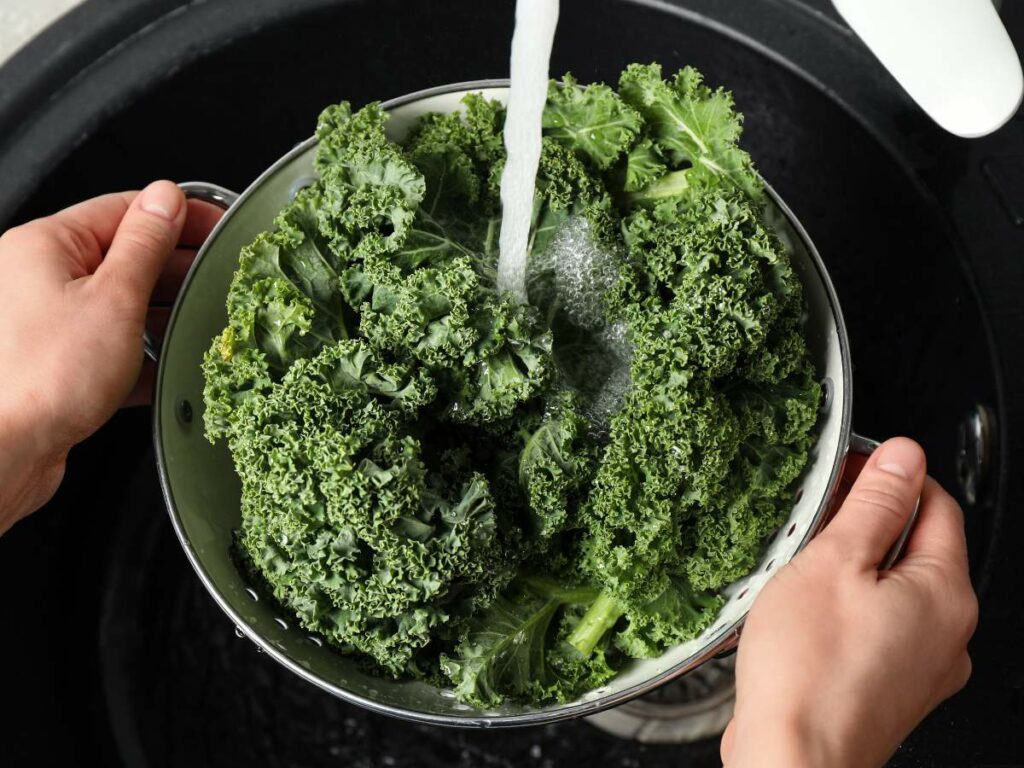
How Do You Incorporate Kale into Your Diet?
If you want to reap the potential health benefits of kale while limiting your oxalate intake, there are many ways you can eat more of it. Sure, it’s easy to just throw it in your salads or your daily green smoothie, but that can get boring. Here are other ideas you can try:
- Add kale to your favorite soups
- Swap collard greens with kale in this creamed collard greens recipe
- Make your chicken curry with pumpkin more colorful with kale and other low-oxalate leafy greens
- Whip up a quick and easy frittata recipe by swapping the spinach for kale
- Enrich your burgers with kale and other low oxalate greens
- Add kale to your homemade hummus and pasta sauces
- Bake kale into a light, crispy snack
- Pair your steaks with wilted kale
- Kale is also a great addition to low-oxalate oatmeal; you can add other low-oxalate veggies to it for a savory oatmeal breakfast
- Start the day with these low-oxalate breakfast ideas, just add kale where it will go well with the flavor
Pro tip: There’s nothing wrong with buying produce from the grocery store, but kale can be fresher and more flavorful if you source it from local growers. Learn how to buy high-quality healthy foods while supporting your local community in my guide to local foods.
What Are the Best Foods for a Low-Oxalate Diet?
Kale is an excellent source of micronutrients while being low-oxalate, but it won’t be enough for a fulfilling meal plan. Here are other low-oxalate options you can consider:
Fruits
- Bananas
- Blackberries
- Blueberries
- Cherries
- Limes
- Pears
- Pineapple
- Raisins
- Strawberries
- Apples
- Apricots
- Cantaloupe
- Grapes
- Honeydew melon
- Lemons
- Mangoes
- Nectarine
- Papaya
- Peaches
- Plums
- Plantain
- Watermelon
Vegetables
- Brussel sprouts
- Celery
- Mung beans
- Mustard greens
- Alfalfa sprouts
- Bok choy
- Broccoli
- Cabbage
- Cauliflower
- Chives
- Corn
- Cucumber
- Green pepper
- Iceberg lettuce
- Mushrooms
- Onions
- Peas
- Pickles
- Radish
- Romaine lettuce
- Yellow squash
- Zucchini
Dairy Products
- Coffee creamer
- Sour cream
- Ice cream
- Yogurt
- Cheese
- Milk
- Cream cheese
- Eggs
Grains
- Cornbread
- Oatmeal bread
- Oat bran muffin or bread
- Corn flour
- White rice
- Corn bran
- Flaxseed
Meats
- Chicken
- Pork
- Venison
- Beef
- Most fish and seafood
Want a printable PDF to take with you to the grocery store? Check out my High & Low Oxalate Food List.
What Foods Should You Avoid on a Low-Oxalate Diet?
High oxalate foods are those that contain more than 15 to 100 mg of oxalate per serving. Your doctor may advise against these oxalate-containing foods if you are on a low-oxalate diet:
Fruits
- Avocados
- Dates
- Grapefruit
- Kiwi
- Orange
- Raspberries
- Tangerines
Vegetables
- Bamboo shoots
- Beets
- Fava beans
- Navy beans
- Okra
- Olives
- Parsnip
- Red kidney beans
- Refried beans
- Rhubarb
- Spinach
- Swiss chard
- Tomato sauce
- Turnip
- Yams
- Carrots
- Collards
- Sweet potatoes
- Beet greens
Grains
- Pancake mix
- Brown rice
- Bulgur
- Corn grits
- Cornmeal
- Couscous
- Millet
- Miso
- Rice bran
- Soy flour
- Wheat flour
- White rice flour
- Spaghetti
Protein
- Tofu
- Veggie burgers
- Soy burgers
- Nut butters (e.g., peanut butter)
Nuts & Seeds
- Almonds
- Cashews
- Peanuts
- Pistachios
- Pumpkin seeds
- Trail mix
- Walnuts
- Pecans
- Sunflower seeds
Soaking and cooking can lower the oxalate content in some oxalate-rich foods. Ask a registered dietitian if they can recommend this method if you still want to incorporate some high-oxalate foods into your diet.
Conclusion
“Is kale high oxalate?” The answer is a resounding “no.” Better yet, it provides many potential health benefits, such as stronger immunity and better digestion.
The low-oxalate diet can seem complicated at first, but as you can see, it’s easy to determine which foods are safe to eat when you’re limiting your oxalate intake. As always, consult your doctor or a licensed dietitian before following any diet, especially if you have pre-existing conditions.
Do you want to know more about the low-oxalate diet? Explore my blog for more low-oxalate tips, recipes, and testimonials!



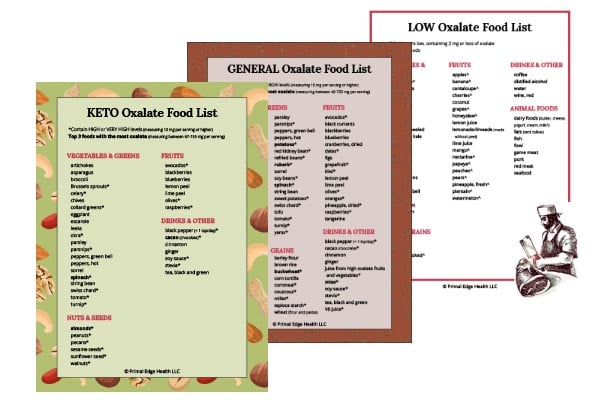
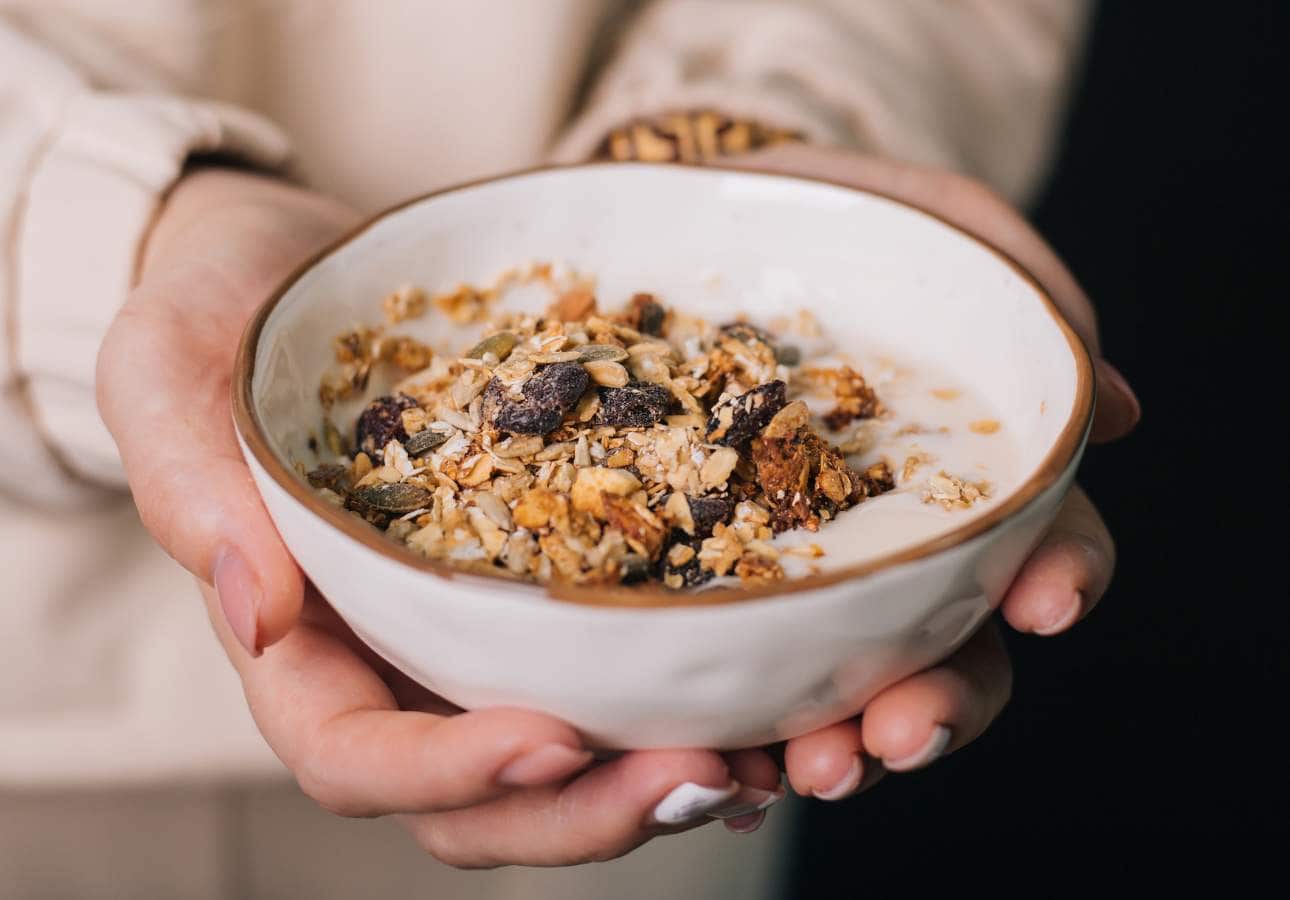
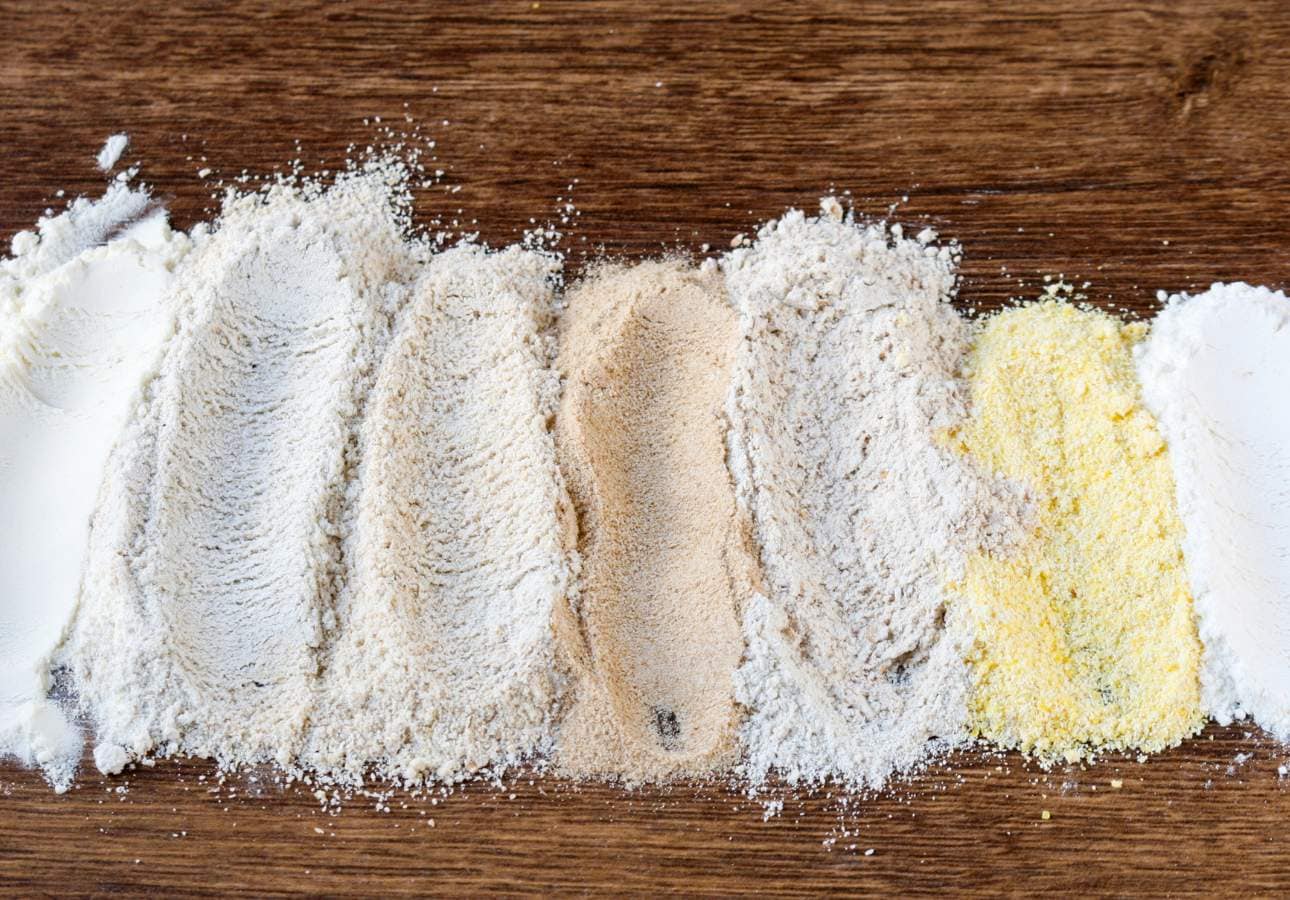

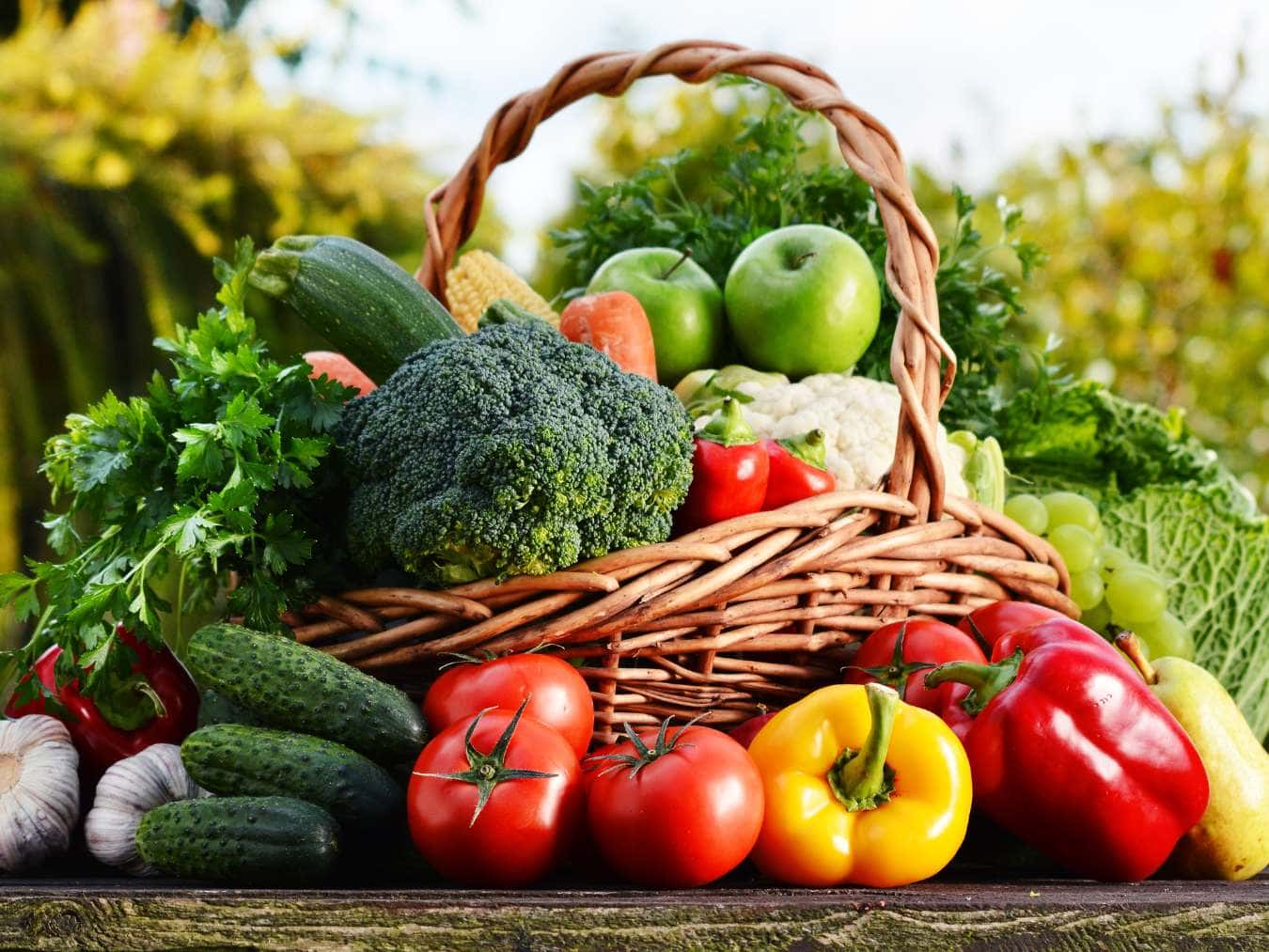
Kidney problems run in family despite all of us being “healthy” eaters. I definitely need to look further into oxalates and am going to consider switching from low-carb to low-oxalate ketovore.
It is definitely worth considering if your family has a history. Hope you find the information helpful, Carissa.